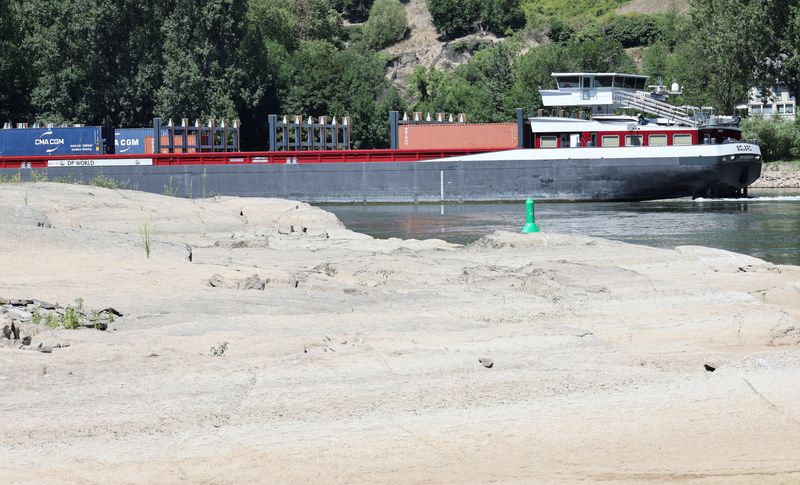HAMBURG (Reuters) - Water levels on the river Rhine in Germany have fallen again in hot and dry weather and shipping costs are rising as vessels cut loads to continue sailing, commodity traders said on Wednesday.
Shallow water after the summer heat-wave has hampered shipping on the entire river in Germany since July, along with other European waterways.
The reference waterline level at the chokepoint of Kaub south of Koblenz was at 48 centimetres on Wednesday, said Refinitiv Eikon data, down about 4 centimetres on the day. Vessels need about 1.5 metres of reference waterline to sail fully loaded.
Freight shipping on the river continues, but with vessels sometimes forced to sail three-quarters empty. But the number of vessels still capable of sailing in the shallow water, especially around Kaub, is declining so increasing transport costs for cargo owners, traders said.
Spot prices for transport in a liquid tanker barge from Rotterdam to Karlsruhe south of Kaub rose to about 110 euros a tonne on Wednesday, up 16 euros on Tuesday and up from only around 20 euros a tonne in June before water levels fell, traders said.
Hot and dry weather is forecast this week and no relief is in sight.
Low Rhine water will affect output over the coming month from two major German coal-fired power stations and could cause logistics problems for coal importers.
Chemicals group BASF said on Friday it could not rule out production cuts if low water disrupts logistics.

Navigation authorities do not close the river at times of low water, leaving it to vessel operators to decide when to stop. The Rhine is an important shipping route for commodities including grains, chemicals, minerals, coal and oil products including heating oil.
German companies faced supply bottlenecks and production problems in 2018 from low Rhine water levels.